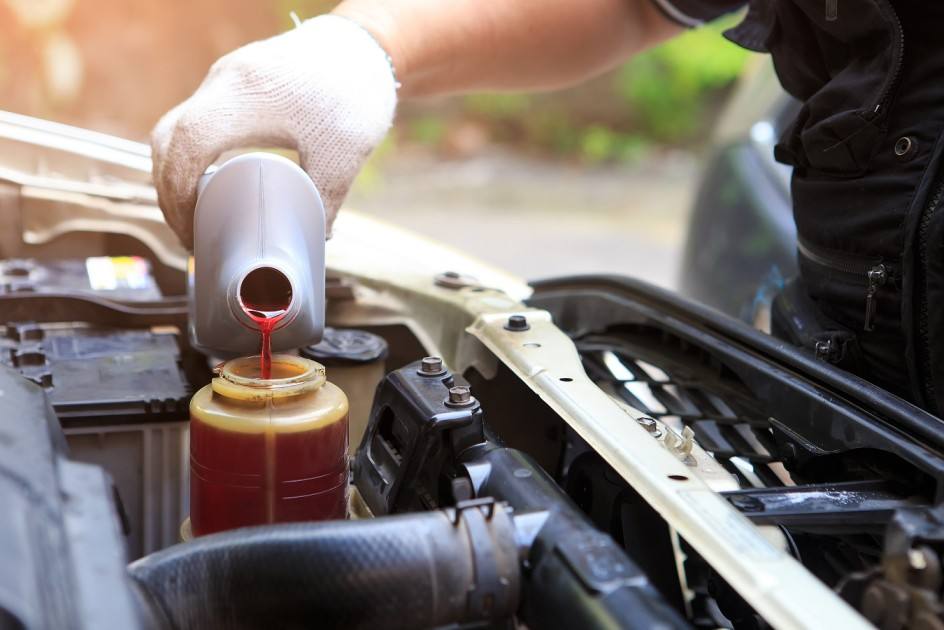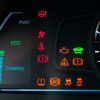While driving a car, there are a few things that you will have to keep in mind. From knowing the 5 Warning Lights that you should never Ignore to The Do’s and Don’ts of Night Driving, you should always be alert. While you own a vehicle, you should know about everything that pertains to your car. For e.g., if you have no idea on the level of fluids in your car, that will land you in trouble when you least expect it. Are you suddenly confused on the various fluids your car might have? Read on to know more about it.
Are Fluids necessary to your vehicle?
Fluids do play a vital role in the proper and smooth functioning of various parts of your vehicle. The six fluids that you have to know about are engine oil, coolant, power steering fluid, brake fluid, and windshield washer fluid. Fuel economy and longevity can only be counted upon if all fluids present in the vehicle are checked upon consistently. You can schedule an oil change every 3,500 miles (depending on your car make and model and the oil used). If you schedule your oil change at Carcility, they even check and top-up various other fluids as well. Always keep your eye and your ear out for any unusual leaks, odors or vibrations.
1. Engine Oil
Might I remind you that engine oil is really necessary to the smooth functioning of your car? Located at the front of your car with a dipstick, the cap of the engine oil will usually have an engine’s symbol on it. First, pull the dipstick out and wipe it clean with a towel or rag. Then, the clean dipstick has to be reinserted and pulled back out. You should be able to see oil on the stick. With markings for maximum and minimum levels, you should be able to figure if your car needs a refill of engine oil or not. If you notice that the engine oil’s colour has gone from yellow/amber to brown/black, that means it’s time for an oil change. If you smell something burning or if you get the smell of gasoline, you can schedule an appointment with Carcility to look into the issue further. The engine oil lubricates and cools your engine’s internal workings such as bearings, pistons, gears, pumps, etc.
2. Coolant
The radiator cap will have a symbol or the words “engine coolant” or “antifreeze” on it. Open it to see if the fluid level is filled up to the top. Unlike the other fluids, coolant comes in a variety of colours ranging from red and pink to blue, yellow, and green. The colour depends on the vehicle model age and manufacturer. Never mix coolant types and always replace with the same type. If an emergency occurs, you can also use water as coolant- only till you get coolant for your vehicle. The coolant cools the engine and provides heating fluid to the climate control system.
3. Power Steering Fluid
Labelled as power steering, you will be able to find a dipstick or a reservoir cap in the hood of your car. Just like checking your engine oil, the same has to be done for the steering fluid as well. Power steering fluid is white wine/pinkish colour. The power steering fluid allows ‘easy steering’. Now imagine driving in the 21st century, without the power steering? Baffles you, doesn’t it? The fluid lubricates and cools the power steering gears, valves, and more.
4. Brake Fluid
Locate the brake fluid cap, usually identified by brake fluid written on it or a symbol of a circle with brackets on either side of it. The simplest of them all, to check the brake fluid, you only have to take a look at the fluid level on the side of the reservoir and the colour of brake fluid. Brake fluid should be near the ‘High’ level and is an amber/white wine colour. Brake fluid is what causes the connection between the brake pedal and the brakes. When stepping on the pedal, a plunger pressurizes the fluid inside the brake lines, which causes the brake pads to clasp the rotors, thus slowing the vehicle. The brake fluid eases up the brake valves, its pistons, and antilock braking system.
5. Transmission Fluid
When it comes to the transmission fluid, some cars have a dipstick, but others may require the assistance of a mechanic. You may not be able to check it on your own. If yours has a dipstick, the transmission fluid is just checked like checking for the engine oil. Only thing different, the engine needs to be running and the transmission has to be in park or neutral, depending on the car you have. It should be a translucent red/amber colour. The transmission fluid also lubricates and cools the gears, valves, pumps, etc.
6. Windshield Washer Fluid
Windshield washer fluid is one of the easiest (and most identifiable) under the hood. The cap usually has text which would be written “washer fluid only” and a symbol which water sprayed onto the front mirror. If the fluid level isn’t at or near the top, pour washer fluid till it’s filled and close it up. There are many brands and options of windshield washer fluid, but you might consider the type with a Rain-X additive for clearer windshield while driving in rain. The fluid is usually blue, green, orange/red in colour. This fluid provides a non-freezing solution for the windshield and headlights.
Never drive your vehicle with low fluid levels. It will be dangerous to you and the other vehicles on the road as well. Make sure before going on long trips that all your fluid is filled and to the brim. Haven’t you heard the proverb, “Better safe than sorry?” That’s the way to go about it. Always remember that your fluid performs the following functions, lubrication of moving mechanical parts, fluid pressure for hydraulically operated systems, and cooling of the systems. If you have not done a fluid check in the recent past, let Carcility, Duabi – UAE, handle the vehicle for you. Get your car fluids checked and topped for free with every Car service through Carcility.







